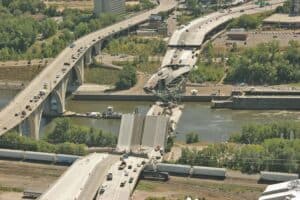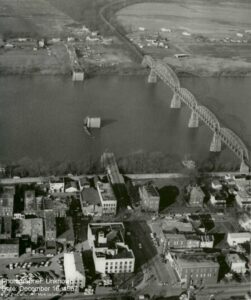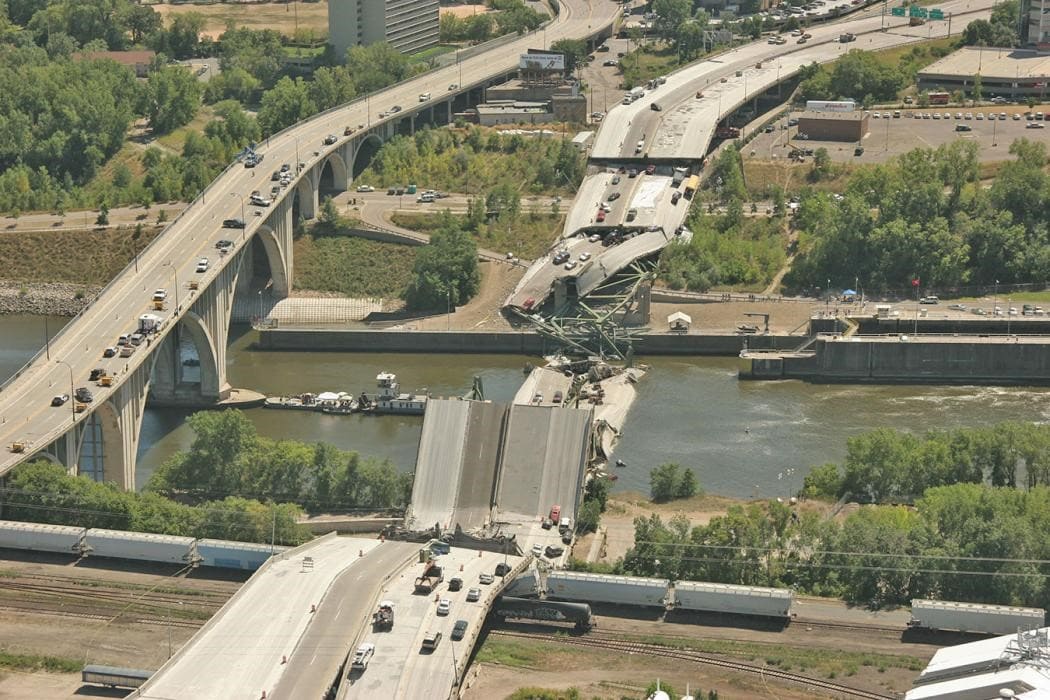
Continuing the theme of Maintenance Inspections, today we look at two major disasters that could have been averted with comprehensive regular Inspections.
One of the worst disasters in America due to poor maintenance was the collapse of the I-35W Mississippi River bridge in Minneapolis, Minnesota on August 1, 2007. The bridge was a vital transportation link carrying 140,000 vehicles a day, and its collapse resulted in the deaths of 13 people and injured 145 more.
The cause of the collapse was determined to be a design flaw that was compounded by poor maintenance. The bridge’s gusset plates, which are steel plates that help distribute the weight of the bridge, were too thin and undersized for the load they were expected to carry. The National Transportation Safety Board (NTSB) investigation found that the plates had been poorly designed and also corroded over time due to the lack of regular inspections and maintenance.
The disaster could have been avoided if there had been proper maintenance and inspections of the bridge. The NTSB report identified multiple missed opportunities to identify and fix the design flaw and the corrosion issues, including inadequate bridge inspections, lack of communication between state and federal agencies, and a lack of oversight and funding for bridge maintenance.
To prevent future disasters like this, it is crucial to invest in regular and comprehensive infrastructure maintenance and inspection programs. This includes investing in modern technology and equipment for inspections, creating clear and consistent communication between government agencies responsible for bridge maintenance, and providing adequate funding for ongoing maintenance and repairs. By taking these steps, we can help ensure that our infrastructure is safe and secure for all who use it.

December 15, 1967, in Point Pleasant, West Virginia the infamous Silver Bridge collapse was also due to poor maintenance. The Silver Bridge was a suspension bridge that connected Point Pleasant with Ohio, and it was used heavily by commuters and travelers.
The collapse of the bridge was caused by a failure in one of the suspension eyebar chains, which was due to a small crack that had developed due to poor maintenance practices. The crack had grown and spread over time, but it was not detected or repaired, and it ultimately led to the catastrophic failure of the bridge.
The collapse of the Silver Bridge resulted in the deaths of 46 people, who were either in their vehicles on the bridge or who were working on the bridge at the time of the collapse. The disaster had a profound impact on the community, and it led to new safety regulations and inspection requirements for bridges across the country.
The disaster could have been avoided if proper maintenance and inspection practices had been followed. Regular inspections of the bridge should have identified the crack in the eyebar chain and allowed for repairs to be made before the bridge failed. Additionally, there should have been more stringent safety regulations and guidelines in place to ensure that bridges were properly maintained and inspected.
The collapse of the Silver Bridge and the Mississippi River Bridge serve as a tragic reminder of the importance of proper maintenance and inspection practices for critical infrastructure, and it highlights the devastating consequences that can result when these practices are neglected.
Throughout North America, WebWork Azzier Computerized Maintenance Management Software (CMMS) is in use by many Government Agencies at all levels – Federal, State and Provincial as well as Municipal to inspect and maintain all of their Infrastructure. In Manufacturing Facilities, Forestry, Oil & Gas, Higher Education, Azzier is being leveraged to mitigate risk of failure of critical infrastructure.
CMMS is a mandatory requirement in most jurisdictions to maintain regulatory compliance ensuring disasters like these two bridge collapses, never happen again. Web Work Azzier was the world’s first web-based CMMS and continues to be a leader in this space.
Web Work Azzier 8.0 is the latest version in a long evolution of best-of-breed CMMS. Web Work was the world’s first web-based CMMS and continues to lead the market with innovative, practical workflows. The modular architecture facilitates cross-module workflows that multiply your efficiencies. In Azzier CMMS, Inspection Routes, Preventative Maintenance, Predictive Maintenance, Work Orders and Email Notification all come together to create a foolproof inspection workflow that will ensure nothing goes unnoticed.
In the next few weeks, we will be publishing articles focused specifically on inspections. WebWork Azzier has always had a comprehensive inspections workflow in our ‘Route Readings’ module. Version 8.0 takes this to a whole new level with enhanced workflows and the addition of a mobile application that truly empowers your inspectors.
Visit our website and register for a FREE TRIAL. Try out Azzier 8.0; if it works for your company, convert your trial to a production site directly and easily through our website.




